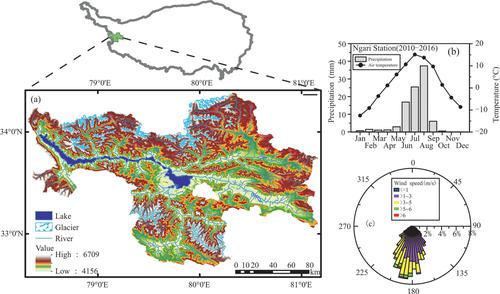当前位置:
X-MOL 学术
›
Acta Geol. Sinica Engl. Ed.
›
论文详情
Our official English website, www.x-mol.net, welcomes your
feedback! (Note: you will need to create a separate account there.)
Paleohydrological Changes in the Western Tibetan Plateau over the Past 16,000 years Based on Sedimentary Records of n‐Alkanes and Grain Size
Acta Geologica Sinica-English Edition ( IF 3.5 ) Pub Date : 2020-06-26 , DOI: 10.1111/1755-6724.14538 Mingda WANG 1 , Yaping YANG 2 , Jiawu ZHANG 2 , Juzhi HOU 1, 3
Acta Geologica Sinica-English Edition ( IF 3.5 ) Pub Date : 2020-06-26 , DOI: 10.1111/1755-6724.14538 Mingda WANG 1 , Yaping YANG 2 , Jiawu ZHANG 2 , Juzhi HOU 1, 3
Affiliation

|
Both monsoons and westerlies have exerted influence on climate dynamics over the Tibetan Plateau (TP) since the last deglaciation, producing complex patterns of paleohydroclimatic conditions. Diverse proxy records are essential to forge a robust understanding of the climate system on the TP. Currently, there is a general lack of understanding of the response of inland lakes over the TP to climate change, especially glacier‐fed lakes. Paleohydrological reconstructions of such lakes could deepen our understanding of the history of lake systems and their relationship to regional climate variability. Here we use records of n‐alkanes and grain size from the sediments of Bangong Co in the western TP to reconstruct paleohydrological changes over the past 16,000 years. The Paq record (the ratio of non‐emergent aquatic macrophytes versus emergent aquatic macrophytes and terrestrial plants) is generally consistent with the variations in summer temperature and precipitation isotopes. The changes in grain‐size distributions show a similar trend to Paq but with less pronounced fluctuations in the early‐middle Holocene. The new data combined with previous results from the site demonstrate that: 1) Bangong Co experienced relatively large water‐level fluctuations during the last deglaciation, with a steadily high lake‐level during the early‐middle Holocene and a decreasing lake‐level in the late Holocene; 2) The lake level fluctuations were driven by both high summer temperatures via the melting water and monsoon precipitation. However, the dominant factor controlling lake level changed over time. The lake‐level history at Bangong Co deduced from the n‐alkanes and grain‐size records reveals the past hydrological changes in the catchment area, and stimulates more discussion about the future of glacier‐fed lakes under the conditions of unprecedented warming in the region.
更新日期:2020-06-26











































 京公网安备 11010802027423号
京公网安备 11010802027423号